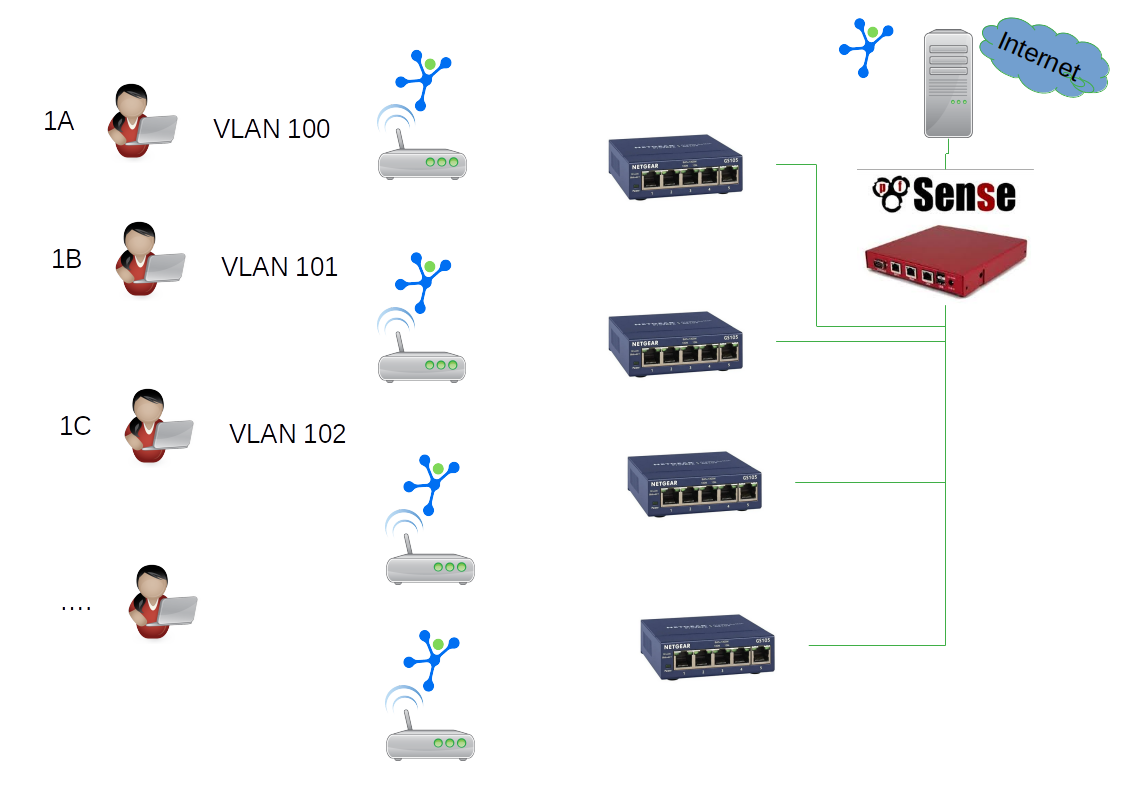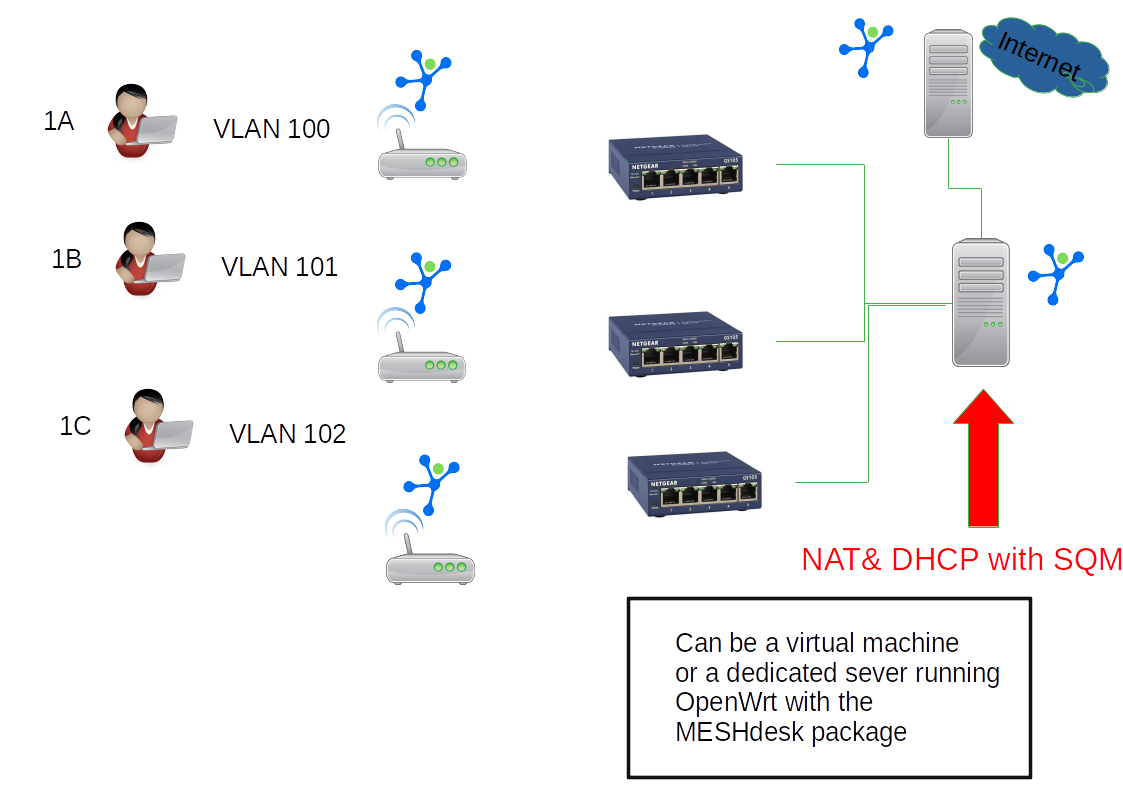This is an old revision of the document!
PPSK with Bandwidth Limits
- On all previous pages about PPSK, a very important topic has hardly been addressed.
- Once we grant a user access to our network, we need a way to manage the bandwidth they consume.
- Both the Captive Portal and the PPPoE server are able to do this and have been developed with this functionality in mind.
- Giving someone access to a WiFi network does not automatically allow you to manage their bandwidth.
- Although we offer advanced features to change a user's assigned VLAN based on their usage during a certain period of time, we still need the ability to limit the speed of a VLAN.
- This is where Smart Queue Management (SQM) comes into play.
- With SQM, we can not only limit the bandwidth on an interface to the value we choose, but also manage the queues so that the user has a more pleasant online experience.
Options for a MDU deployment
- The philosophy of RADIUSdesk is to offer a non-disruptive solution that can co-operate with other vendors.
- The following diagram shows a PPSK solution where the customer has chosen to use PFsense for NAT/DHCP and bandwidth limiting:

- We also offer the customer the option of using OpenWrt, which implements SQM.
- This can then be managed via APdesk.
- As OpenWrt can run on different architectures or even on a virtual machine, it offers us even more possibilities:

- Lets take a closer look at SQM on OpenWrt
SQM on OpenWrt
The following sections are a short summary of information from this Wiki page (https://openwrt.org/docs/guide-user/network/traffic-shaping/sqm) as well as our own experimenting.
Required Packages
- For SQM to be available in OpenWrt, you need the sqm-scripts package.
- If you also have Luci on the OpenWrt device, it is recommended to install the additional luci-app-sqm package.
- This will install the Luci SQM package which is well developed and offer you an intuitive way to apply SQM on selected interfaces using the Luci web interface.
Config File
- Essentially the SQM application in Luci manipulates the /etc/config/sqm UCI based config file and start and stop the SQM service to apply those settings.
- Lets look at a snippet of the sqm config file:
config queue 'br_ex_v104' option interface 'br-ex_v104' option enabled '1' option script 'piece_of_cake.qos' option linklayer 'none' option verbosity '5' option upload '4096' option download '4096' option debug_logging '0' option qdisc 'cake'
- Some items of note on this snippet:
- The Queue discipline is CAKE. There is also other options like fq_codel which you can use should performance be an issue.
- The upload and download values are in kbps so this snippet limits it to 4Mbps (4*1024)
- The script used to set up the SQM (based on the settings in the /etc/config/sqm file) is *piece_of_cake.qos*.
- The SQM section is applied to the br-ex_v104 interface which is actually a bridge.
- Lets look at the /etc/config/network file to find out more about the br-ex_v104 interface.
config device
option type 'bridge'
option name 'br-ex_v104'
option stp '0'
list ports 'eth1.104'
config interface 'ex_v104'
option device 'br-ex_v104'
option proto 'static'
option ipaddr '10.200.105.1'
option netmask '255.255.255.0'
- The word interface in the /etc/config/sqm section is used is a intuitive, yet it can also be applied to a device like a bridge.
- In our case the br-ex_104 bridge has one port, eth1.104. This port will receive traffic from VLAN 104 on eth1. (e.g. whn a user connects with a Private PSK and the Dynamic VLAN associated with him is 104.)
- Traffic going through this bridge will thus be throttled and managed with SQM.